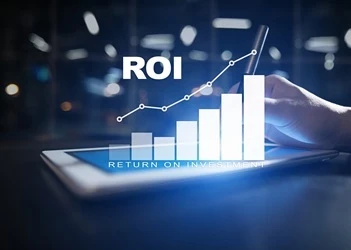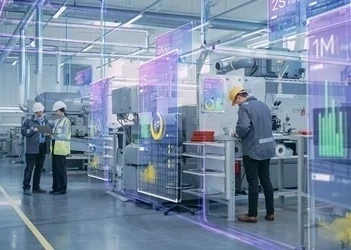Event report: Process Mining vs Process Modeling 2019
Add bookmarkThe PEX Network’s first Process Mining event couldn’t be more timely: just before Christmas we asked how many people were using Process Mining right now, and how many expected to be using it in the next twelve months. The 30% jump was a wake up call that here was a ‘moment’ in the PEX industry, and it was up to us to step up.
It’s not an understatement to say that the uptake of the Process Mining vs Process Modeling webinar series has been extremely enthusiastic, with large numbers of registrants and some very keen speakers.
On Day One, we heard from Southard Jones of Celonis, Massimiliano Desante of MyInvenio and Stefano Pendrazzi from Cognitive Technology.
Although our polls showed that the audience was largely already immersed in the world of Process Mining and odeling, a few asked what the difference was - so here's a primer on Process Mining.
Driving Business Transformation with the Intelligent Business Cloud
(Beware – a technical hitch early in the presentation cut off Southard’s phone line for a couple of minutes, so if you hear a British accent that’s me – feel free to fast forward to Southard’s return a moment or so later.)
Southard got us off to a great start talking about the benefits of process mining and modelling – how the increase in productivity can mean an enhanced experience for the customer; we are at the forefront of a new revolution around productivity and experience.
Southard was also keen for us to see how businesses can change their mindset – so that business outcomes are a key focus of every process.
Likening the Intelligent Business Cloud to a Googlemap that tells you where to change direction to reach a destination more quickly, we looked at the difference between Process Modeling and Mining, and how the two can work together so that factors can be adjusted in real time to impact on things like delivery time.
The standout quote for me was from Siemens: ‘In 16 months I visited over 30 countries and automated more than ten million activities with a team of just three people.’ (Gia-Thi Nguyen)
This intervention saves the company more than $15m annually.
Questions afterwards revolved around the connecting to other apps and APIs, and how the new technology was promising to deliver faster, at higher quality – and at a lower price.
Credem Bank digital transformation driven by DTO & Process Mining
For me the presentation told an important story about how new ideas are adopted and mainstreamed: MyInvenio’s rise has been impressive – named by Gartner as a ‘cool vendor’ in 2016, ‘Emerging tech’ in 2017, and ‘Representative vendor’ in 2018.
Massimiliano Delsante talked us through what process mining could do.
An early poll in the presentation asked what people felt the hot topic was in digital transformation.
Process Mining – 33%
BPM – 30%
RPA – 26%
AI – 10%
Other – 0%
Perhaps an indication that we had a PM crowd, but also a reassurance that we had the right people.
We heard about the benefits of creating a Digital Twin of an Organization
POLL: In your opinion, which is the most valuable aspect of a Digital Twin?
Modeling - 57%
Monitoring - 26%
Execution – 17%
We looked in depth at MyInvenio’s work with Credem – one of Italy’s top 10 banks. Aiming to improve internal efficiency and customer experience, we looked at an example of account closure as a streamlined process. And the figures are impressive: post intervention, the new process saved money (85%) time (30%) and increased customer satisfaction (20%).
Stefano Pendrazzi took us through a the process in a bit more detail to show us how applying a lean approach to mined processes made the system more streamlined.
Audience questions included:
How much time did it take to extract and prep data?
What is the best approach to quickly show value of Process Mining to management?
But for me the most interesting (and one I put out to the audience as a whole) was:
What are the top 5 considerations when selecting a process mining vendor?
Day Two kicked off with...
Harnessing crucial company visibility with process mining and modelling
Gero Decker - who worked with Process Mining inventor Wil van der Aalst in the early 2000s - has a foot in both camps of mining and modeling.
Gero kicked off with an early poll:
POLL: What is the main driver behind Process Management in your company?
Operational efficiency - 79%
Intelligent Automation - 38%
IT Transformation - 33%
Compliance - 29%
Customer experience - 20%
Process Modeling had its heyday in the 80s and 90s (ERP was a big driver). Gero was keen to point out the circumstances under which modeling and mining should and should not (indeed, could not) be used:
Step 1 - discover - what's the process we're talking about? How does it run today?
Step 2 - analyse - what's wrong with it? What needs to change?
Step 3 - Design - Mining only provides a view based on what's happened in the past - it is an analytic, not a creative tool.
Step 4 - Validate - again, mining is not meant to help here!
Step 5 - Impliment
Step 6 - Control - Can use mining here again. Have we actually made improvements? Can we make our aims a reality? Mining gives an accurate idea of what is actually happening.
Step 7 - Improve - Mining shapes our future plans with accurate data
Gero gave us a strength/weakness matrix of Mining and Modeling:
Modeling is the right technique for getting to a quick discovery and analysis done for a large number of proocesses.
'Don't get too hung up on tools and technology only... the thing that seperates the successful projects from the unsuccessful... is a mixture of things:
1 - getting the right leadership commitment. There's lots of grassroots, but to make it stick, you wil have to get the leadership on board.
2 - process ownership. Mining looks fancy and cool and produces nice charts, but then nothing happens. Ownership is not established enough within the company. Simple principal, but important!
3 - Single source of truth
4 - organization and governance.Get people using a common language. Establishing a CoE so that people can evangelize.'
Process Mining in Banking and Insurance
Dr Sofia Passova - StereoLOGIC
Stan Passov - StereoLOGIC
David Hadd - Webster Bank
Sofia told us that measurement and management are the key issues at play, and gave us a conceptual introduction before handing over to Stan Passov.
Stan:
What makes banking different?
You have to mine data from so many systems. StereoLOGIC has many projects in banking and insurance - which yielded some impressive figures:
FTE savings for East West Bank include
Billing - 19%
Case implementation - 34.5%
Customer service - 30%
1 analyst was able to complete work that would've previusly been done by five.
A transformation project in a large Canadian bank was the next case study. This was a major undertaking as huge changes had to be implemented across over a thousand branches.
The bank was quickly able to identify the most common errors and replicated how each issue was produced. Within six months, the bank was able to clear the backlog of issues.
David Hadd gave a detialed account of how the processes were investigated and streamlined at Webster Bank. It's worth taking a close look at these slides at this point, because there are some impressive stats in the detail here, including the ability to see how employees compare against each other.
Our audience poll - Are you using RPA - or planning to implement it in the next six months?
Bridging the gap to all-hands continuous process improvement - from CEO to your doorman
Day three saw Richard Lipovsky, Minit's CMO and Head of Consulting examine why Process Mining is capturing the imaginaton or people at the moment.
'Process Mining hasn't taken off just yet - this is the dawn of process mining,' Richard told us - which presumably makes this a very good time to get on board if you want to stay ahead of the curve.
Process Mining is changing from something seen as a one-time initiative undertaken by outsiders into an ongoing activity, carried out in-house.
Since 2015/16 we have moved from not having the data for these projects to a clearer understanding of the problems that organisations are facing. As tools get more sophosticated, data is much less of an issue.
A big talking point is the democratization of process mining: 'Everyone can now understand how their perfomance affects the performance of their department or company... transparency has been lacking and this is what we call the missing link for operational excellence.'
Audience questions included:
What is the real value Process Mining can deliver for an executive? And what about the daily operation managers point of view?
Is it possible to receive feedback from users (e.g. comments) via the dashboard?
Is process mining still a good tool for companies which have no statistics collected by an monitoring system?
Closing remarks
The beauty of a digital event is, of course, that we are able to react to what we find in the real world. So as soon as we counted up the responses to our survey on Process Mining, we knew that this wasn't just something we were hearing about, it was something people were actually going out and doing. We thought it was essential to give organizations embarking on this journey a few helpful pointers along the way.
It's certainly been an education for the PEX team on an area we hadn't previously given due prominence. The enthusiasm of attendees - both in numbers and interactions through social media and via the Q&A facility on the webinars themselves - have given us a clearer focus on what we can do to reflect this sector of Process Excellence and welcome it under the PEX umbrella.
On that note, I'll leave you with a selection of the attendee comments on the event itself:
Really helpful - great to see more actual customer examples and how value is created.
As it is relatively a new methodology it was very important to clarify what is it and how it can be applied for process improvement.
Good training to feel the added value of Process Mining & Modeling to help implement RPA and as a result improve the overall business performance.
































